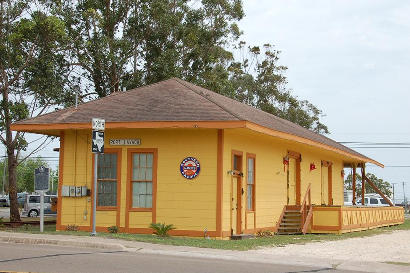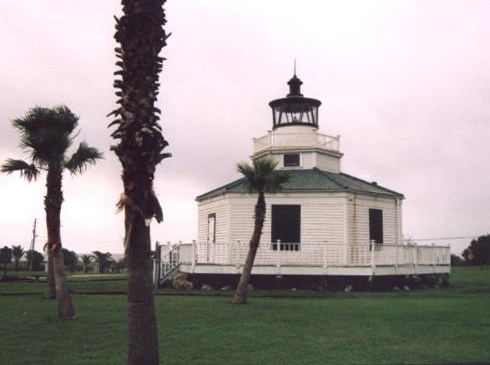Things to do in Port Lavaca

Port Lavaca, TX
Calhoun County Museum
1896 Jail building, it eventually moved to the Courthouse Annex Building and then to its present location. The mission of the Calhoun County Museum is the acquisition, documentation, preservation, study and exhibition of artifacts relating to the history, natural history and maritime history of Calhoun County.
Passing this material culture on to future generations. Some of the outstanding exhibits include the Fresnel Lens from the 1852 Matagorda Island Lighthouse, an 8-foot
diorama of the town of Indianola, a collection of items from the Belle in an exhibit entitled the La Salle Odyssey and many more items dealing with the life and times of Calhoun County.

Port Lavaca, TX
Lighthouse Beach Park
City-maintained park with the following amenities:
- Fishing pier
- Splash pads
- Playground
- 2200 foot board walk from beach to bird tower, made from recycled materials
- Picnic area
- White sandy beach
- Large, 50′ by 100′ covered pavilion
- 4750 foot walking path
- Restrooms
- Pool

Port Lavaca, TX
Indianola Historical Marker Tour
Incorporated as a town in 1853, Indianola’s roots were first set at Indian Point, three miles to the north of Powderhorn Bayou. At Indian Point, an American settlement had sprung up in 1846 a year after Texas had become a state. By 1848, Indian Point was the primary entry port for European immigrants and Americans landing here to migrate westward.
Take the historical marker tour to learn more about the rich history of Indianola, TX.
History of Port Lavaca
Welcoming Visitors Since 1519: History in a Seashell:
The first European to explore the seven bays of Calhoun County was Alonza Alvarez de Pineda in 1519. The town was founded after The Great Comanche Raid of 1840 when Comanche Indians swept down from the Hill Country and destroyed the tiny coastal town then known as Linnville. Only a small marker remains today to mark the former town. Former Linvillain Thomas McConnell bought land from a Deleon colonist and called the place Lavaca. The town succeeded in a very short time, eclipsing the commerce that Linville had seen prior to the raid.
Lavaca became the county seat for Calhoun County in 1846. In November 1847 a stage line was inaugurated connecting the town to Victoria. During the civil war, the city was bombarded by Union ships in late 1862 but refused to surrender. The hurricane of 1875 so damaged the railroad that Indianola became the only port with a railroad connection. By 1884 Lavaca’spopulation was down to only 70 people. But after Indianola was obliterated in the 1886 hurricane, Lavaca’s star began another ascent.
Lavaca, now known as Port Lavaca, was shipping seafood and the railroad ran weekend excursions to the coast. Port Lavaca welcomed the seafood-hungry tourists then – as it does today. In 1920 a seawall was completed and in 1928 Port Lavaca shipped more shrimp than any other port in the US.
*Photos and historical facts provided by Texas State Historical Association.
Port Lavaca, TX
Half Moon Reef Lighthouse

Port Lavaca, TX
Port Lavaca Southern Pacific Depot

Port Lavaca, TX


